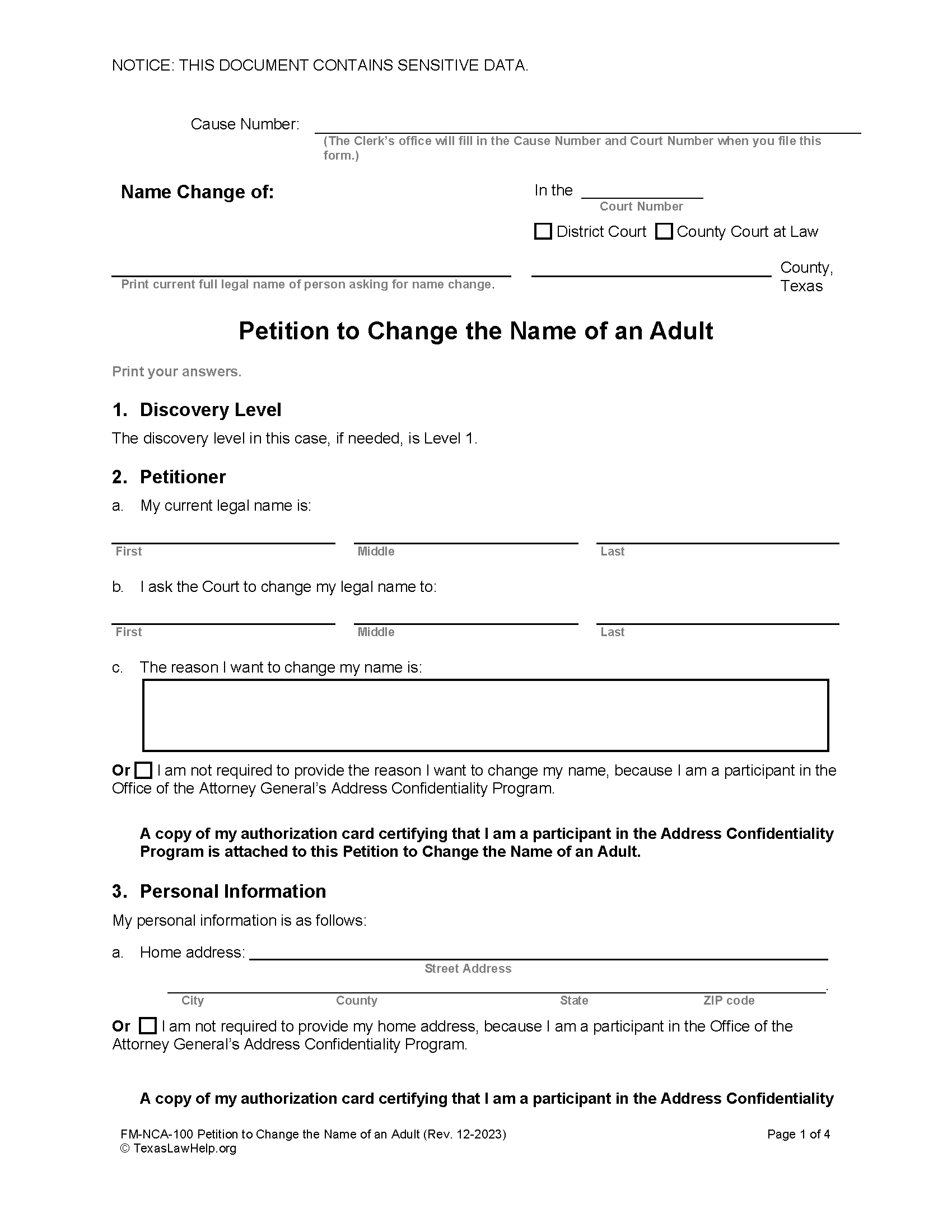Eligibility Requirements
- Must reside in the county where petition is filed
- Must be 18 years old
- Minors require a parent or guardian to file on their behalf
How to Legally Change a Name in Texas
Step 1 – Prepare Documents
Step 2 – Take Fingerprints
Step 3 – File Documents
Step 4 – Prepare for Hearing
Step 5 – Attend Court Hearing
Marriage and Divorce
Name changes can also occur without a court order during marriage or divorce. An individual can take their partner’s name on their marriage certificate or restore their former name on a divorce decree.[4]
Both a marriage certificate or divorce decree can be presented to government agencies to update the name that appears on records.
Resources
Forms
- Petition to Change the Name of an Adult
- Order Changing the Name of an Adult
- Statement of Inability to Afford Payment of Court Costs
Links

